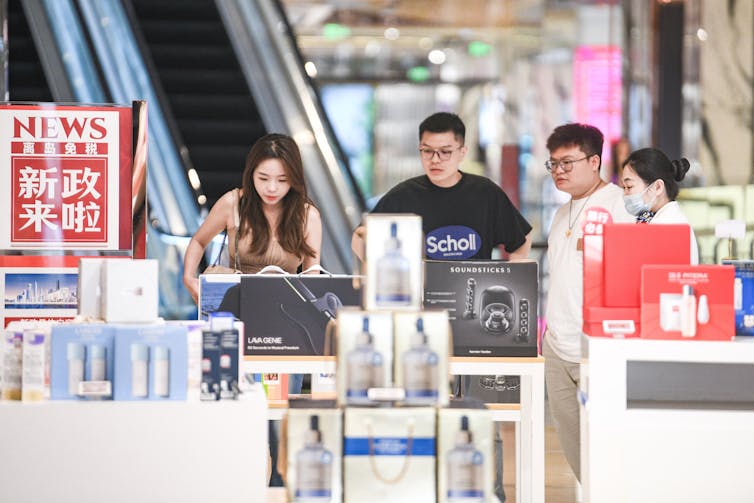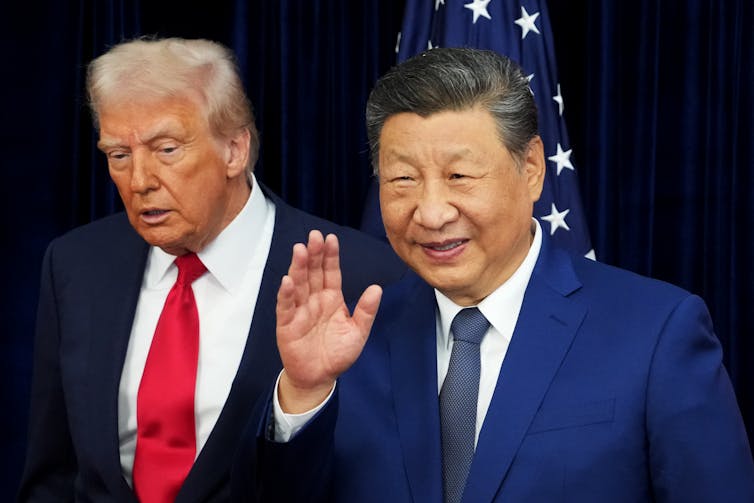China’s new 5-year plan: A high-stakes bet on self-reliance that won’t fix an unbalanced economy
The latest blueprint from Beijing stresses ‘self-reliance’ and ‘high-quality development.’ But is that enough to offset weak domestic growth and poor consumption?
Every few years since 1953, the Chinese government has unveiled a new master strategy for its economy: the all-important five-year plan.
For the most part, these blueprints have been geared at spurring growth and unity as the nation transformed from a rural, agrarian economy to an urbanized, developed powerhouse.
The task that faced China’s leaders as they met in early October 2025 to map out their 15th such plan was, however, complicated by two main factors: sluggish domestic growth and intensifying geopolitical rivalry.
Their solution? More of the same. In pledging to deliver “high-quality development” through technological self-reliance, industrial modernization and expanded domestic demand, Beijing is doubling down on a state-led model that has powered its rise in recent years. President Xi Jinping and others who ironed out the 2026-2030 plan are betting that innovation-driven industrial growth might secure China’s future, even as questions loom about underpowered consumer spending and mounting economic risks.
As an expert on China’s political economy, I view China’s new five-year plan as being as much about power as it is about economics. Indeed, it is primarily a blueprint for navigating a new era of competition. As such, it risks failing to address the widening gap between surging industrial capacity and tepid domestic demand.
High-tech dreams
At the heart of the new plan are recommendations that put advanced manufacturing and tech innovation front and center. In practice, this means upgrading old-line factories, automating and “greening” heavy industry and fostering “emerging and future industries” such as aerospace, renewable energy and quantum computing.
By moving the economy up the value chain, Beijing hopes to escape the middle-income trap and cement its status as a self-reliant tech superpower.
To insulate China from export controls put in place by other countries to slow China’s ascent, Beijing is doubling down on efforts to “indigenize” critical technologies by pumping money into domestic companies while reducing dependence on foreign suppliers.
This quest for self-reliance is not just about economics but explicitly tied to national security.
Under Xi, China has aggressively pursued what the Chinese Communist Party calls “military-civil fusion” – that is, the integration of civilian innovation with military needs.
The new five-year plan is poised to institutionalize this fusion as the primary mechanism for defense modernization, ensuring that any breakthroughs in civilian artificial intelligence or supercomputing automatically benefit the People’s Liberation Army.
Reshaping global trade
China’s state-led push in high-tech industries is already yielding dividends that the new five-year plan seeks to extend. In the past decade, China has surged to global leadership in green technologies such as solar panels, batteries and electric vehicles thanks to hefty government support. Now, Beijing intends to replicate that success in semiconductors, advanced machinery, biotechnology and quantum computing.
Such ambition, if realized, could reshape global supply chains and standards.
But it also raises the stakes in China’s economic rivalry with advanced economies. Chinese prowess in building entire supply chains has spurred the United States and Europe to talk of reindustrialization to avoid any overreliance on Beijing.
By pledging to build “a modern industrial system with advanced manufacturing as the backbone” and to accelerate “high-level scientific and technological self-reliance,” the new plan telegraphs that China will not back down from its bid for tech dominance.
An elusive rebalancing
What the plan gives comparatively modest attention, however, is the lack of strong domestic demand.
Boosting consumer spending and livelihoods gets little more than lip service in the communiqué that followed the plenum at which the five-year plan was mapped out.
Chinese leaders did promise efforts to “vigorously boost consumption” and build a “strong domestic market,” alongside improvements to education, health care and social security. But these goals were listed only after the calls for industrial upgrading and tech self-sufficiency – suggesting old priorities still prevail.
And this will disappoint economists who have long urged Beijing to shift from an overt, export-led model and toward a growth model driven more by household consumption.

Household consumption still accounts for only about 40% of gross domestic product, far below advanced-economy norms. The reality is that Chinese households are still reeling from a series of recent economic blows: the COVID-19 lockdowns that shattered consumer confidence, a property market collapse that wiped out trillions in wealth, and rising youth unemployment that hit a record high before officials halted the publication of that data.
With local governments mired in debt and facing fiscal strain, there is skepticism that bold social spending or pro-consumption reforms will materialize anytime soon.
With Beijing reinforcing manufacturing even as domestic demand stays weak, the likelihood is extra output will be pushed abroad – especially when it comes to EVs, batteries and solar technologies – rather than be absorbed at home.
The new plan is cognizant of the need to maintain a strong manufacturing base, particularly among beleaguered industrial farms and other older industries struggling to stay afloat. As such, this approach may prevent painful downsizing in the short run, but it delays the rebalancing toward services and consumption that many economists argue China needs.
Ripple effects
Beijing has traditionally portrayed its five-year plans as a boon not only for China but for the world. The official narrative, echoed by state media, emphasizes that a stable, growing China remains an “engine” of global growth and a “stabilizer” amid worldwide uncertainty.
Notably, the new plan calls for “high-level opening-up,” aligning with international trade rules, expanding free-trade zones and encouraging inbound investment – even as it pursues self-reliance.
Yet China’s drive to climb the technological ladder and support its industries will likely intensify competition in global markets – potentially at the expense of other countries’ manufacturers. In recent years, China’s exports have surged to record levels. This flood of cheap Chinese goods has squeezed manufacturers among trading partners from Mexico to Europe, which have begun contemplating protective measures. If Beijing now doubles down on subsidizing both cutting-edge and traditional industries, the result could be an even greater glut of Chinese products globally, exacerbating trade frictions.

In other words, the world may feel more of China’s industrial might but not enough of its buying power – a combination that could strain international economic relations.
A high-stakes bet on the future
With China’s 15th five-year plan, Xi Jinping is making a strategic bet on his long-term vision. There is no doubt that the plan is ambitious and comprehensive. And if successful, it could guide China to technological heights and bolster its claim to great-power status.
But the plan also reveals Beijing’s reluctance to depart from a formula that has yielded growth at the cost of imbalances that have hurt many households across the vast country.
Rather than fundamentally shift course, China is trying to have it all ways: pursuing self-reliance and global integration, professing openness while fortifying itself, and promising prosperity for the people while pouring resources into industry and defense.
But Chinese citizens, whose welfare is ostensibly the plan’s focus, will ultimately judge its success by whether their incomes rise and lives improve by 2030. And that bet faces long odds.
Shaoyu Yuan does not work for, consult, own shares in or receive funding from any company or organization that would benefit from this article, and has disclosed no relevant affiliations beyond their academic appointment.
Read These Next
RFK Jr. wants to scrutinize the vaccine schedule – but its safety record is already decades long
Federal officials are questioning the safety of the vaccine series children receive. Here’s the story…
Deception and lies from the White House to justify a war in Venezuela? We’ve seen this movie before
Two US wars based on lies, in which tens of thousands of American troops and millions of civilians died,…
Miami’s new mayor faces a housing affordability crisis, city charter reform and a shrinking budget
Eileen Higgins won a hard-fought election to become Miami’s new mayor. Now for the hard part – governing…






